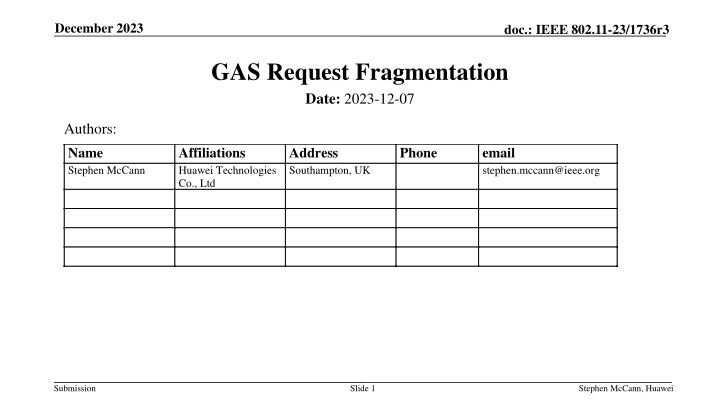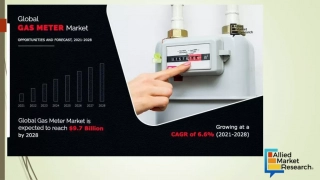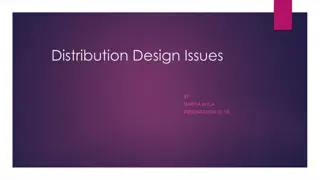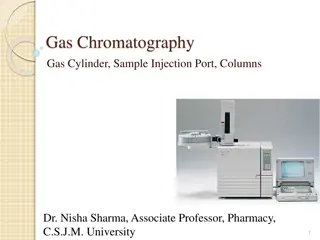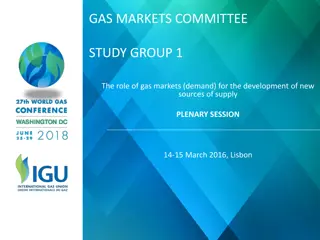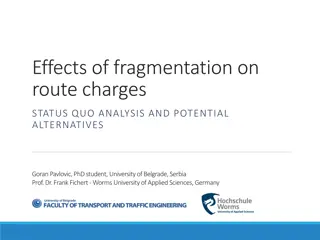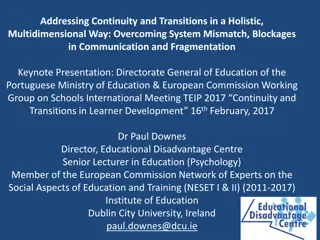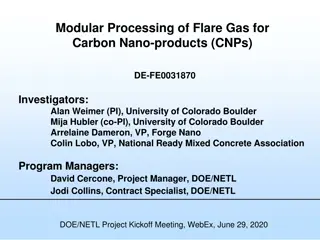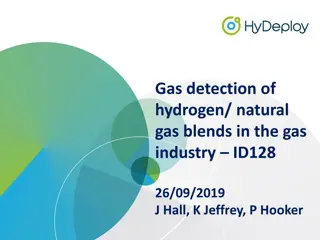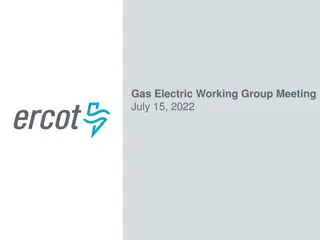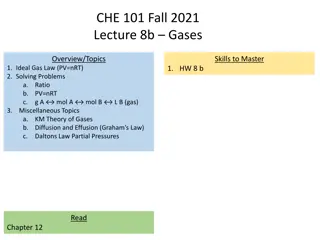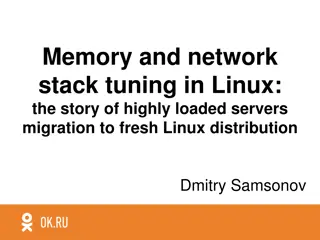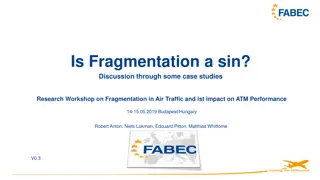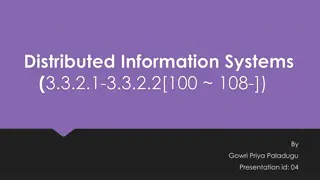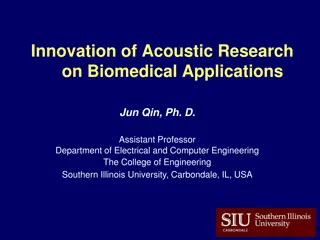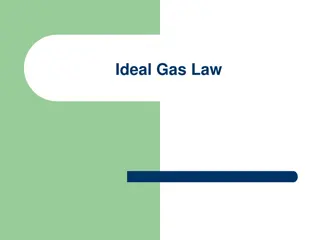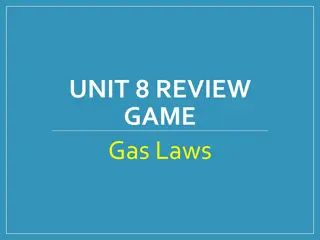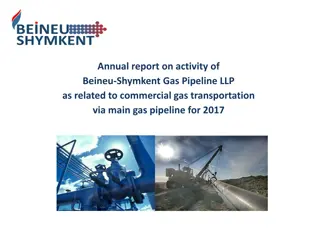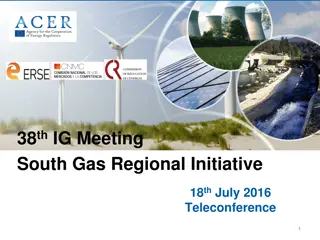GAS Request Fragmentation
The document discusses the need for fragmentation in GAS Request messaging in IEEE 802.11-23 standard, providing detailed insights into supporting use cases and protocol mechanisms. Authors: Stephen McCann, Huawei Technologies Co., Ltd.
Download Presentation

Please find below an Image/Link to download the presentation.
The content on the website is provided AS IS for your information and personal use only. It may not be sold, licensed, or shared on other websites without obtaining consent from the author.If you encounter any issues during the download, it is possible that the publisher has removed the file from their server.
You are allowed to download the files provided on this website for personal or commercial use, subject to the condition that they are used lawfully. All files are the property of their respective owners.
The content on the website is provided AS IS for your information and personal use only. It may not be sold, licensed, or shared on other websites without obtaining consent from the author.
E N D
Presentation Transcript
December 2023 doc.: IEEE 802.11-23/1736r3 GAS Request Fragmentation Date: 2023-12-07 Authors: Name Stephen McCann Affiliations Huawei Technologies Co., Ltd Address Southampton, UK Phone email stephen.mccann@ieee.org Submission Slide 1 Stephen McCann, Huawei
December 2023 doc.: IEEE 802.11-23/1736r3 Abstract There are a couple of use cases within the Wi-Fi Alliance that require a GAS Request message to support fragmentation. Submission Slide 2 Stephen McCann, Huawei
December 2023 doc.: IEEE 802.11-23/1736r3 GAS Generic Advertisement Service Allows a STA to transmit an unsolicited query request to a peer STA (typically an AP) to request infrequent information from a server (e.g. AP location, network access). The server can be either in the AP or behind the AP. The query response contains hint information to be used on a best effort basis. This information is usually valid at an infrastructure AP. GAS is a 4 stage protocol exchange including a delay mechanism. It also allows fragmentation and provides a group addressed response mode. Submission Slide 3 Stephen McCann, Huawei
December 2023 doc.: IEEE 802.11-23/1736r3 Submission Slide 4 Stephen McCann, Huawei
December 2023 doc.: IEEE 802.11-23/1736r3 Submission Slide 5 Stephen McCann, Huawei
December 2023 doc.: IEEE 802.11-23/1736r3 Notes The existing response fragmentation behavior can be made symmetric. GAS Query Response Fragment ID renamed to GAS Query Fragment ID , to avoid confusion in the new text. The Group Addressed (GA) GAS behavior has not been touched. Submission Slide 6 Stephen McCann, Huawei
December 2023 doc.: IEEE 802.11-23/1736r3 Feedback Q: How does the AP know that the STA wants to fragment a request. Is there a flag in the GAS initial request. How is this done for the existing GAS initial response?? A: This mechanism was missing. The requesting STA adds the Fragment ID field to the GAS Extension field in the GAS initial request to indicate that the GAS query request will be fragmented. Q: How does the AP know the size of the query request, when the STA starts to fragment. It may be too large for it. A: This mechanism was missing. Add a new field to the GAS Extension element to indicate the query request size on octets. This is then transmitted at the start of a fragmentation message sequence allowing the receiving STA to know in advance the size of the GAS query request. Note: this would also work for the legacy query response. Q: The updates to the GAS Comeback Request need to be parseable. The mix of elements and frames is a mess. Add a length to the frame (as a subfield), so the overall frame can be parsed. A: A new GAS Comeback Request Fragment frame has been created to produce a cleaner solution. This is used when the GAS Initial Request signals that fragmentation is required. Submission Slide 7 Stephen McCann, Huawei
